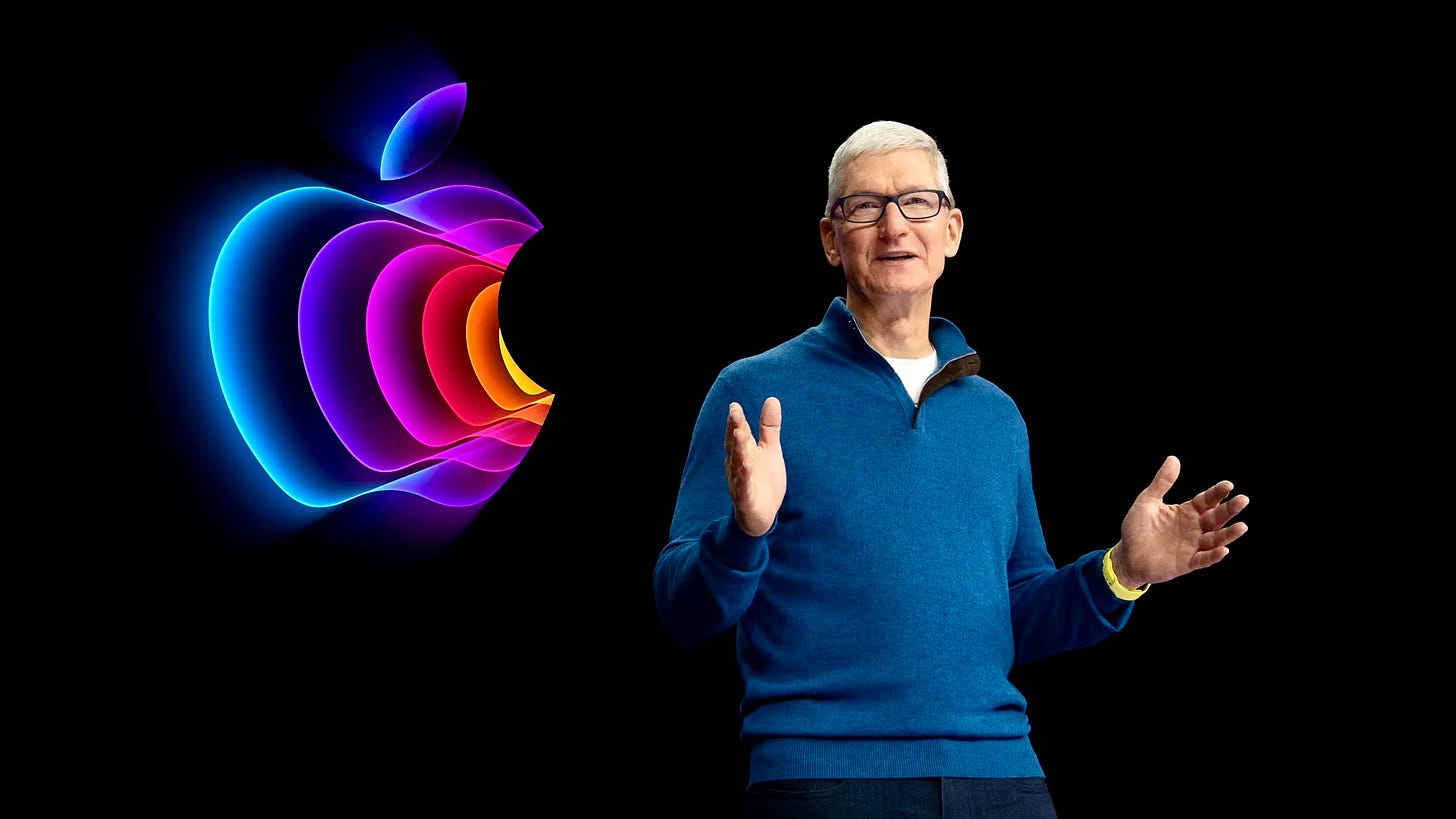If Apple doesn’t have a big AI announcement at WWDC, people are going to lose their minds
Assessing the state of the tech industry, and how Apple might navigate these choppy waters.
This Spring has witnessed a tsunami of AI announcements from all the big players in the industry. OpenAI debuted ChatGPT 4o, and demoed some incredible use cases for what their latest AI iteration can do, including an incredibly impressive update to their voice assistant technology. Microsoft just released a whole range of Copilot+ laptops with a dedicated Microsoft Copilot key on the keyboard, and a creepy feature called Recall that takes persistent screenshots in order to help you access content you viewed or worked on in the past. Google released a 100-point list of announcements that were mostly AI-related. Humane released a dud of a dedicated AI device, and then decided that they’re trying to sell their company.
So where’s Apple in all this? First, it’s worth remembering that Apple has been delivering products and features based around AI for years. iOS 17’s autocorrect? AI. Photos recognizing your Aunt Sally in 432 pics? AI. Predictive text when you’re sending an iMessage? AI. And don’t forget one of the biggest features introduced in 2011: Siri. (We’ll come back to Siri, don’t worry.)
There’s two reasons why Apple doesn’t get much love for its AI work. First, because Apple has traditionally eschewed the word. Historically a lot of AI work from other companies has relied mostly on cloud services. While Apple also uses a lot of cloud-hosted services, they prefer to rely on on-device machine learning wherever possible for privacy reasons. If you watched any of Microsoft’s “Copilot+ PCs” event the other day, you would have heard a lot about neural processors (NPUs), which are part of the on-device silicon that can do high-end AI crunching locally. Apple arguably delivered the world’s first consumer-level NPU back in 2017 in the iPhone X. Apple’s term of NPU is “Neural Engine.” (And if you don’t believe my claim that Apple delivered the first consumer NPU, Microsoft Copilot says you’re wrong.)
NPUs are all the rage this year, and every single one of Apple’s iPhones, iPads, Apple TVs, and Macs ships with a Neural Engine as part of their A-series or M-series system-on-a-chip silicon.
The more present reason why Apple doesn’t spring to mind when the term AI gets brought up, is because right now most people associate the term with generative AI. People think of asking ChatGPT to write them a song or a poem, or asking it to generate a form letter, or having Midjourney create a piece of custom artwork. Apple has very little in that realm. Predictive text is operating on similar underlying AI tools, but it’s just not the same slate of capabilities. Right now Wall Street, the tech press, and everyone on social media is telling Apple that it had better deliver the AI goods at WWDC in just over two weeks.
My advice to everyone is to temper your expectations. Although Apple deserves a lot of credit for being early to the NPU game, I don’t think there’s any reason to believe they’re on the verge of delivering an in-house ChatGPT rival. They also frequently take their time, sometimes years of it, before they’re ready to release a new product in a given category. We’re a few years into foldable phones at this point and Apple still doesn’t have one.
If Apple fails to deliver a big generative AI announcement at WWDC (or at least one that wows the market), don’t panic. The lack of a foldable iPhone doesn’t seem to have hampered iPhone sales in the slightest. Sometimes there’s a mismatch between what investors and journalists demand, and what consumers prove they want with their dollars. The Humane and Rabbit AI products were DOA.
What Apple may announce are new AI features powered by Google’s or OpenAI’s AI tech. Apple has been rumored to have been in talks with both companies about this. That actually would please Wall Street. And heck, a new version of Siri powered by ChatGPT 4o would actually be incredible to have. But my guess is that this would only be a stopgap until Apple’s internal generative AI tools are ready.
Remember that the first several versions of iOS featured a Maps app designed by Apple, but using Google Maps data to power it. When the Apple/Google relationship splintered, Apple had to rush build their own Maps data, initially heavily reliant on other non-Google sources. The first versions were rough. But it got better fairly quickly, and I’ve probably looked up something on Google Maps twice in the last decade. We may be in for a similar story with Apple and generative AI.
So get excited for WWDC, but manage your expectations. And get your popcorn ready for the media reactions to whatever Apple announces. It’s going to keep us writers busy all Summer.




I’m desperately hoping iPadOS gets some major ‘pro’ love at WWDC. But in reality, we’ll probably get some AI feature that they claim is groundbreaking but doesn’t really work that well.
My cynicism is working overtime in this comment 😆